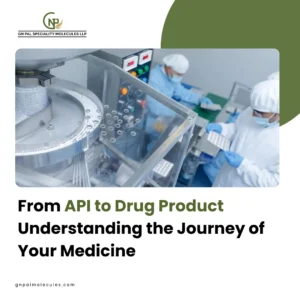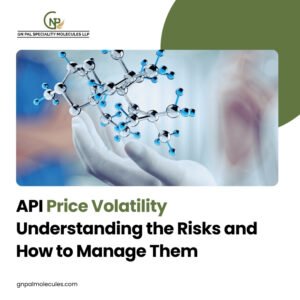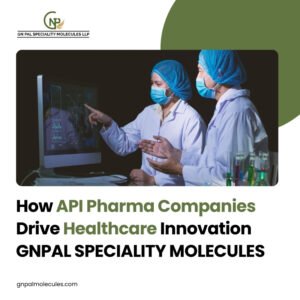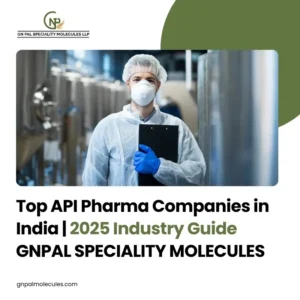
Pharmaceutical science is among the most compelling and influential sciences in contemporary medicine. Each tablet, injection, or syrup you consume is the culmination of years of research, strict regulatory adherence, and meticulous manufacturing processes. Yet, amidst this sophisticated science, two terms make people scratch their heads Drug API and Drug Product. These two are not identical, although they are strongly related. It is important for pharmacists and medical professionals to understand the difference between them, and even for patients who are interested in learning about the drugs they consume on a daily basis.
In this article, we will deconstruct the differences between Drug API (Active Pharmaceutical Ingredient) and Drug Product (Finished Dosage Form), discussing their definitions, functions, production processes, quality control processes, and significance in the pharmaceutical sector. At the end of this, you will have a clear and comprehensive understanding of why drug products and APIs cannot be used interchangeably and how each has a distinct role to play in providing safe and effective medications.
Understanding Drug API (Active Pharmaceutical Ingredient)
Active Pharmaceutical Ingredient (API) is basically the soul of any drug. It is the biologically active ingredient that yields the desired therapeutic action within the body. For instance, in paracetamol tablets, the API is paracetamol, which acts to lower fever and alleviate pain.
APIs are extremely pure chemical or biological entities, and their quality, purity, and strength establish the efficacy of the medicine. APIs may be obtained from natural sources, manufactured synthetically in the laboratory, or created by advanced biotechnological means like recombinant DNA technology.
Manufacturing APIs is not an easy process. It entails several cycles of chemical synthesis, fermentation, purification, and crystallization. Every stage is closely watched to prevent any compromise in the finished API in terms of international quality levels, be it the U.S. Food and Drug Administration (FDA) or European Medicines Agency (EMA) standards. A minute impurity can ruin a medicine’s safety and efficacy, and therefore severe Good Manufacturing Practices (GMP) are implemented.
Another important thing to realize is that APIs are not used directly by patients. They are unprocessed pharmaceutical ingredients and are usually too strong or unsafe for direct use in their pure state. APIs need to be compounded with other ingredients before becoming a safe and usable drug product.
What is a Drug Product?
A Drug Product, or Finished Dosage Form (FDF), is the ultimate drug that is ingested or applied by the patient. It consists of the API and other inactive ingredients known as excipients, present for a host of reasons including stability, solubility, taste, or convenience in administration.
For example, the paracetamol tablet you purchase at a pharmacy is a drug product. Although the API (paracetamol) delivers the real therapeutic action, excipients such as starch, cellulose, or magnesium stearate assist in the shaping of the tablet, the regulation of its dissolution within the stomach, and facilitating swallowing.
Drug products are available in many different forms depending on how they are used. These include:
- Solid dosage forms – tablets, capsules, powders
- Liquid dosage forms – syrups, solutions, suspensions
- Injectables – vials, ampoules, prefilled syringes
- Topical forms – creams, ointments, gels
- Inhalers – for respiratory disorders such as asthma
Unlike APIs, drug products are ready-to-use medicines. They are meticulously formulated not just for efficacy but also for patient compliance, safety, and convenience. That is why a drug product receives extensive formulation research, stability studies, and clinical trials before it enters the market.
Key Distinctions Between Drug API and Drug Product
Though both words pertain to the pharmaceuticals industry, there are important distinctions between them that are worthwhile to examine in depth:
Definition:
- API: The drug substance which is pharmacologically active and brings about the therapeutic effect.
- Drug Product: The end, edible medication with the API and excipients.
Function in Treatment:
- API: Interacts directly with the body to treat, prevent, or control disease.
- Drug Product: Delivers the API in a safe, effective, and patient-convenient format.
Manufacturing Process:
- API: Chemical synthesis, fermentation, or extraction operations.
- Drug Product: Formulation, blending, compression, coating, filling, or packaging.
Safety for Direct Use:
- API: Generally unsafe for use in pure form because of potency.
- Drug Product: Stable, safe, and formulated for direct patient use.
Regulatory Oversight:
- API: Regulated under GMP for bulk drug substances.
- Drug Product: Regulated as the final marketed medicine with additional safety, efficacy, and labeling requirements.
Understanding these distinctions is vital in appreciating how much effort goes into ensuring that when you swallow a pill or receive an injection, it is both safe and effective.
The Relationship Between API and Drug Product
Even though APIs and drug products are distinct, they cannot be separated within the larger context of pharmaceutical development. Consider it like this: the API is the car engine-it generates the power and functionality. The drug product is the whole car not the engine alone, but the body, wheels, fuel system, and protective features that make it usable and convenient.
Without APIs, there would be no therapeutic effect. Without drug products, APIs would still be raw, impractical chemicals. Together, they are the backbone of pharmaceutical medicine, guaranteeing that the patient is getting not only the correct chemical compound but in the correct amount, at the correct time, and in a form which can be safely ingested.
Why Does the Distinction Matter?
The distinction between drug product and API is not entirely theoretical; it has practical consequences in several spheres:
Pharmaceutical Production: While companies can specialize in making APIs, others specialize in formulating drug products. Indeed, many international pharmaceutical supply chains depend on various nations for various production phases. For instance, India and China are among the premier suppliers of APIs, whereas Europe and the U.S. are dominant in drug product formulation and innovation.
Regulatory Approval: APIs and drug products have varied regulatory processes. Both are approved separately by the authorities to guarantee safety, quality, and efficacy.
Generic Medicines: Once patents on branded drugs lapse, generic companies tend to purchase APIs from bulk manufacturers and then formulate their own drug product. Knowing the difference here is important to understand how generics are priced lower but still efficient.
Patient Safety: Misunderstanding the difference may result in misconceptions. For instance, one may think in error that APIs can be consumed directly, which might be dangerous.
Conclusion
To sum up, although the Drug API and the Drug Product are two aspects of the same coin, they have different but equally significant functions in medicine. The API is the active ingredient that provides therapeutic effects, whereas the drug product is the end form ready for the patient that guarantees safety, stability, and usability. This revelation does not only underscore the intricacy of pharmaceutical development but also serves to make us realize and thank the stringent processes that lead us to have safe and efficient medicines.
Medicines are much more than chemicals meticulously crafted solutions, fusing science, technology, and patient-focused design. The next time you swallow a tablet or get an injection, recall that behind it is an interesting tale of an API being converted into a drug product with innovation and accuracy.
FAQs
- Are APIs used directly without being converted to a drug product?
No, APIs are typically too potent, unstable, or unsafe to be administered in their pure form. They need to be formulated into a drug product for safe administration. - Who produces APIs and drug products?
Some firms exclusively make APIs, while others specialize in drug formulation. Large pharmaceutical companies tend to do both, but outsourcing is not uncommon. - Why are APIs frequently made in nations such as India and China?
Due to cost benefits, sophisticated manufacturing plants, and robust experience in bulk production, India and China lead API production worldwide. - What is the purpose of excipients in drug products?
Excipients assist in binding, stabilizing, taste modification, release control, and patient compliance. Excipients render the API safe and effective under real-world application. - How do regulators guarantee the quality of APIs and drug products?
Both the APIs and drug products have to meet stringent Good Manufacturing Practices (GMP), quality testing, and regulatory approvals before they are allowed for usage.





